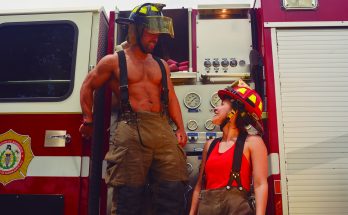By Carola Rico
The issue of turibuses
In recent months, the issue of tourist sightseeing bus routes in the historic center has been an issue. During the XXI Ordinary Session of the City Council on April 6, 2022, Mayor Mauricio Trejo presented a proposal regarding the familiar tourist buses, known as turibuses. The majority of the Council endorsed the plan (11 in favor, 1 against).
At that session, changes in stops for these vehicles was approved. “Tourist public transport in San Miguel de Allende will be relocated to provide a better service to users and improve road mobility in the historic center,” was the first point of a statement issued by the City Council. Calzada del Cardo was proposed as the new tourist pick-up and drop-off point, as well as the location for boarding logistics and a semi-fixed module for ticket sales.
The explanation was: “This change favors road mobility in the historic center. These actions are currently carried out on Juárez Street, where they generate vehicular congestion as well as reduced pedestrian traffic. Similarly, there is vehicular chaos in the Benito Juárez Park every time the turibuses park around it,” Trejo explained. With the relocation, users will benefit from a nicer waiting area, with furniture and a wooded space. There will be less danger for users when they approach the buses, since the area has been demarcated to show where the vehicles will flow from the private parking lot located on the street. The mayor pointed out that this proposal meets the need for the natural growth of San Miguel, which requires more efficient, comfortable, and safe mobility. “Municipalities grow and must move forward. San Miguel has modernization plans through conservation of good living. Today, one of the main problems is mobility. The city must move to different tourist transportation means, along with ecological and electric usage than what we have today,” the mayor said.
An expert’s view on mobility
Atención wanted to learn the opinion of experts on the subject of mobility, so we interviewed Adolfo Cervantes, director of Transit and Transportation of San Miguel de Allende from 2009-2012. When Cervantes began this job, the major traffic problem he faced was cobblestone streets and slow-moving traffic. One of the first things he had to learn upon arriving at his new public office was the Municipal Traffic Regulations of SMA, a document that most are unfamiliar with. We note that each municipality in the country has its own traffic regulations and penalties.
Another issue Cervantes had to analyze was road accidents and their causes. He decided to focus on this issue, and his priority became to reduce the number of traffic accidents. His actions resulted in a considerable reduction in road catastrophes during his tenure. Cervantes noted that motorcycle accidents are the most common in SMA. Motorcycles are the easiest and cheapest way to get around, and it is easy to acquire one. Cervantes added that another factor in the incidence of accidents is the design of the city. Mobility in SMA is complicated because of narrow streets, two-way traffic, and reduced space to move around in because official vehicles can park anywhere.
Cervantes said that the concept of good traffic flow is basically making sure that all users feel safe and can move efficiently—from a woman taking her children to school to vendors, they should all be able to move calmly and safely. When that flow is not working well, you have to make a new plan or review the one you have to see how it can be made more efficient.
Cervantes explained that the concessions for tourist buses and public urban buses were allocated by the State, though in 2002 the State handed over the latter to the municipality. However, according to Cervantes, these concessions are in practice bought through political favors, which perverts the arrangement. He feels that we must move toward a good system and a solution to public transport, and this should be the top concern for mobility in the city.
Today, around 70,000 daily passengers make trips in urban and suburban buses. The law dictates that the State is responsible for providing public transportation to citizens, but given the inability of the State government to provide the service, it resorts to concessions. Cervantes believes that concessions are not a good arrangement because of the high cost of diesel, tires, drivers, and new buses versus the profits passengers generate. Some routes have high passenger rates, and these are the ones that are currently under concession. The user is the one least taken into account in the concessions; he or she does not participate in the decisions that are made regarding vehicles or routes. Cervantes believes that should not be the case because passengers are the main actors in this matter.
Cervantes feels that if we had efficient public transport, like in some first-world countries, there would be a substantial reduction in vehicles on the road. People would understand that it is cheaper to travel by public transport than to pay for gasoline and parking fees.
Regarding the tourist trams, Cervantes said that they emerged in first world countries to provide a quality service, with passenger being able to get on and off to visit tourist attractions. In theory it is a good concept, but in his view, SMA streets are inadequate for this service. Previously, there was a defined route for this type of transport. The route has changed to accommodate buses slightly larger than public buses and more passengers. Cervantes says two trams should not stop at the same place; they should be organized and staggered to avoid congestion. Prior to the reorganization, it was common to see several streetcars at the same time on calle Juárez. Now the municipal administration has placed planters and established limited stopping points.
In addition to the trams, the number of cars circulating in the city during high season affects mobility. Cervantes believes the solution is creating special parking lots on the outskirts of the historic center for non-local vehicles. In his opinion, SMA is one city from Monday to Thursday, and a different one from Thursday to Sunday, a reflection of the tourism flow. In his view, different road measures should apply on the days in question.
When Cervantes was director of Traffic, it was customary to hand out flyers so visitors were familiar with the traffic rules of the city. Cervantes stated that a new formula is being used and it appears to be successful. Those who come to the city to deliver goods must be here from 7-10am, with no restrictions for suppliers of beverages, gas, garbage, etc.
He added that when an accident occurs, even a small one, it can collapse mobility in the entire city and ambulances and fire trucks cannot get through. The roads must be free in order for emergency services to flow in a crisis.
The idea of parking meters did not seem bad to Cervantes. However, he stressed that they must not modify the urban landscape of the city and must be modern. There must be a system for determining whether a vehicle is local or not: the former would not be fined, and the latter would be. In this way tourists would bring in additional income to SMA.




